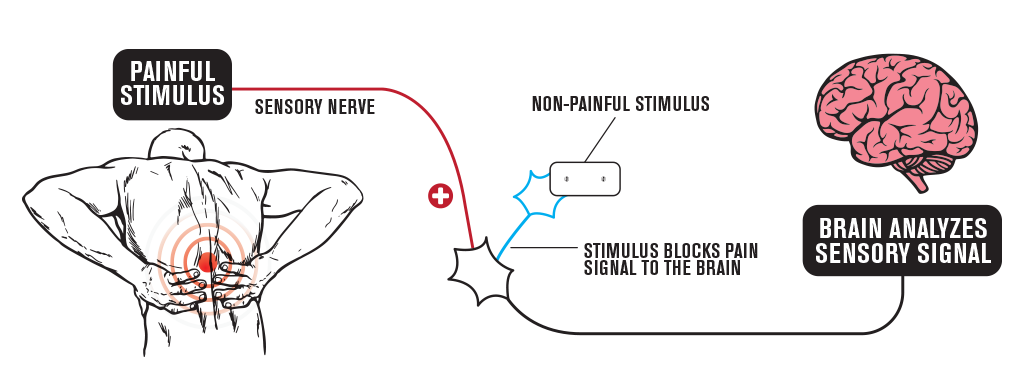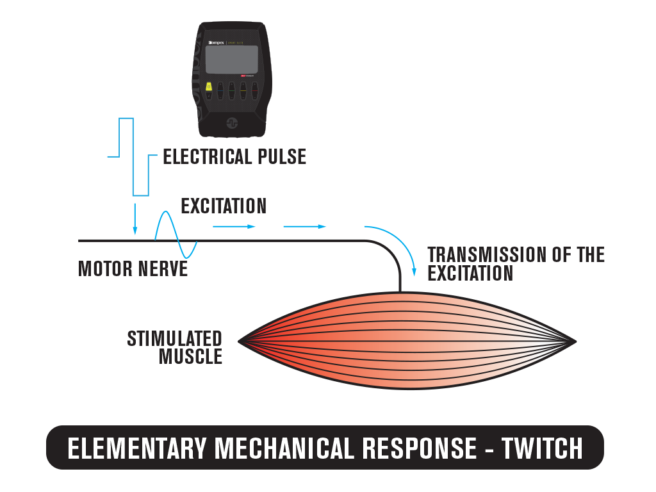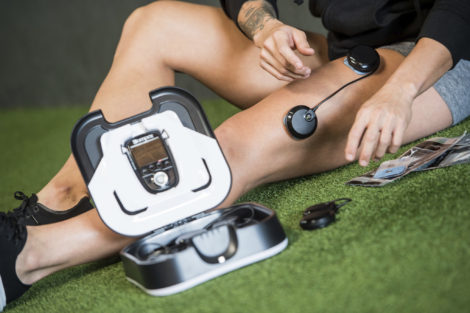TENS VS. NMES: What’s the Main Difference?

Whether looking for a tool to boost your fitness and strength or recover from an injury quickly, electric muscle stimulation (EMS) can help you achieve your goal. With that comes many questions, like what exactly is NMES and TENS? This is a common question we get at events when we are demonstrating the Compex’s uses and benefits. To avoid further confusion, we want to clarify the differences between NMES (NeuroMuscular Electrical Stimulation) and TENS (Transcutaneous Electrical Nerve Stimulation). Many people have been in physical therapy and may have had an experience with TENS and NMES devices, but were not educated on the difference between these types of stimulus.
TENS vs NMES
TENS and NMES target different nerve groups of the body. TENS is specifically targets the sensory nerves, which are responsible for sending pain signals to the brain. NMES targets the muscle itself, specifically through the motor nerves. This allows the NMES machine to create a muscle contraction to recruit more muscle fibers when training; warming up or recovering. Sensory and motor nerves fire at different frequencies, which is why NMES and TENS devices affect the body differently.
TENS - Transcutaneous Electrical Nerve Stimulation
TENS is the use of an electrical current to stimulate the nerves for therapeutic purposes. TENS stimulates the sensory nerves, suppressing the pain signals that are being sent to the brain to give the user relief. In other words, TENS “tricks” the brain to ignore the pain for a short duration of time by applying a non-painful stimulus to the same area. 
NMES – NeuroMuscular Electrical Stimulation
NMES uses electric muscle stimulation (EMS) to cause excitement in the muscle tissue. This stimulus is designed to mimic the same type of signal the brain sends to the muscle when working out. There are two types of muscle fiber: slow twitch and fast twitch. Both muscle fibers contract at different frequencies. Compex Electric Muscle Stimulators offer various pre-programed settings which target the specific muscle types differently by adjusting the frequencies and work to rest cycles. To learn more about the variety of settings, click here. The training settings are set to run in time intervals that depend on the goal of the muscle stimulus. For example, an Endurance Program will run at a lower frequency to target slow twitch fibers, have a longer contraction time and a shorter rest cycle. The more you increase the intensity of the device, the more muscle fiber you recruit. This is how users see big strength gains, increases in vertical and reduce the risk for injury.



Can you recommend a brand?
Thanks
Diane
who was doing some research on that. And he actually bought me
lunch since I found it for him smile Thus let me rephrase that:
Thank you for lunch!
Grrrr... well I'm not writing all that over again. Anyhow, just wanted to say wonderful
blog!
you writing this post and also the rest of the site is also very good.
Just purchased a 2.0 -2 of them.
Was curious as to if there were any protocols for muscle building..I.e.
Program A-3x per week for 5 weeks